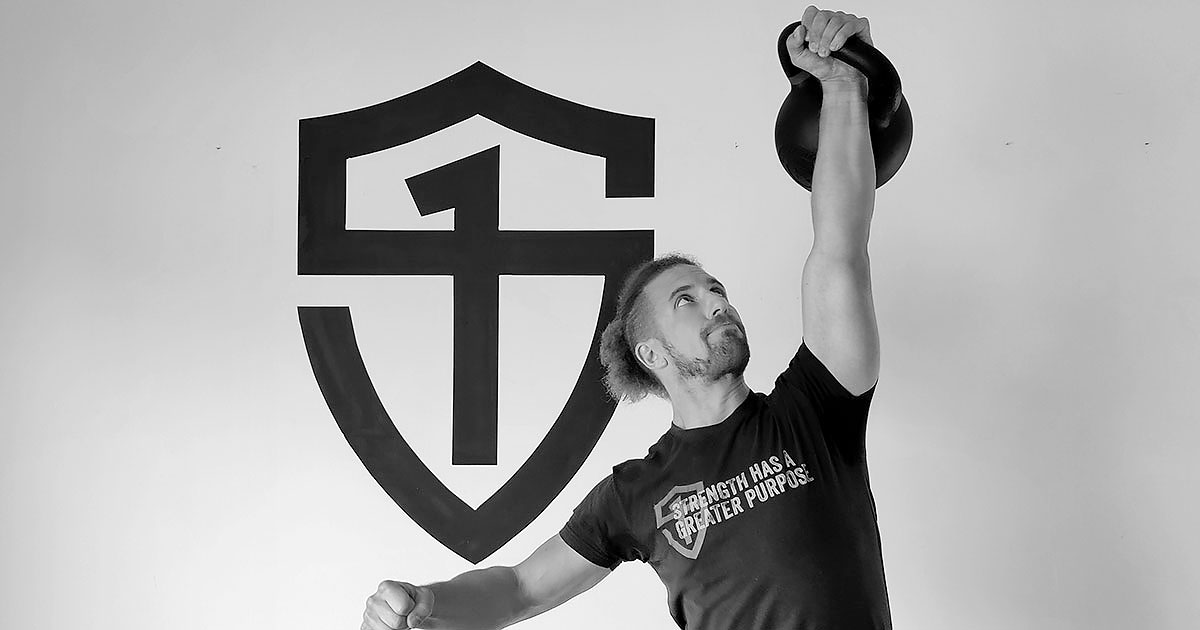
Introduction
In 2023, Pavel published an article on the StrongFirst blog raising the question “Will You Gain More Strength by Varying Your Lifting Speed?” and afterwards published another article with examples of using different lifting speeds to increase one’s strength in the double kettlebell front squat (“The Triple Gear Squat Protocol”). This article outlines how I adapted one of Pavel’s front squat protocols to the military press, and how it helped me to successfully press half my bodyweight.
Subject Background
In October 2023, I signed up for an SFG II certification scheduled for the end of May 2024. I had done some kettlebell push-presses and jerks in the past, so I knew my main project for the next few months would be to increase my military press to achieve the half-bodyweight press required for the SFG II strength test. At the time I weighed ~82kg and was able to press 36kg for a few reps, but the 40kg kettlebell would not leave the rack position.
Shortly after signing up for the SFG II, I scrolled through the recent articles on the StrongFirst blog, and encountered the “Triple Gear Squat Protocol” mentioned above. The article provides two training protocols for double kettlebell fronts quats, prescribing squats at different speeds: Monday—fast, Wednesday—medium, and Friday—slow. In addition to lifting speed, the second protocol also varies intensity (weights used) and volume (total reps on a given day).
Hypothesis
Have you ever automatically pictured yourself doing exercises while reading about them? When I reached the bottom of the article, I realized that I had pictured myself doing double kettlebell military presses, instead of the front squats described. I started wondering, would this protocol also work for the military press? And could it possibly get me closer to achieving the half-bodyweight press? I decided to do the experiment, using myself as the guinea pig.

The Protocol—Experimental Setup
For his Triple Gear Squat Protocol #2, Pavel lays out a 5-week training plan, varying lifting speed, intensity (weights lifted), and training volume (total number of reps) from day to day:

Before starting the actual training protocol, you must determine the training weights that correspond to your 4-7 rep max (RM) and your 8-12RM.
Experiment #1—Double Kettlebell Military Presses
I was able to strict press two 32kg kettlebells for 5 reps and two 24kg kettlebells for 10 reps. As a result, my 5-week training plan looked like this:

As an example, on my first day of practice, I pressed two 24kg kettlebells, 3 reps for 3 sets and one single rep to get to the 10 repetitions total. I tried to press as explosively as possible, but without using momentum or pushing from the legs.
I followed this program for five weeks, occasionally doing some kettlebell swings, snatches, and get-ups on my off days. Generally, I felt I was not putting in enough work (only 45 presses per week could not possibly be enough, right?). Therefore, after week 5 and an additional day off, I was quite surprised to see the 40kg kettlebell rise from the rack position to a solid overhead lockout, on the left and the right side.
Intermediate Results—In-between Kettlebells
To solidify my gains, I did a 6-week cycle of another favorite kettlebell program of mine, the “Total Tension Kettlebell Complex.” I had done this program a few times before, always receiving strength gains in my presses and squats and putting on some muscle. This time was no different. After this 6-week cycle, pressing the 40kg kettlebell was still a challenge, but I could do a few singles with enough rest between them. My bodyweight went up to around 84kg, and I was now on the edge between having to press the 40kg or the 44kg kettlebell to pass the SFG II strength test (now a good four months out).
At this point I asked myself whether I should watch my diet for the next few months or work my way up to pressing the 44kg kettlebell. Of course, I decided to go back to the lab and perform another experiment.
Experiment #2—Single Kettlebell Military Presses
This time I chose to do single kettlebell military presses, using the exact same set and rep scheme as above but pressing with the left arm and right arm, one after the other. Using this approach, I would not do more reps per set, but the practice sessions would take longer, and I would have to engage my midsection and pressing foundation (hips and legs) for about twice as long.
In the initial testing, I was able to press a 36kg kettlebell for 5 reps and 28kg for 10 reps. Therefore, my new training plan looked like this:

Note that the total reps on a given day were done on the left and on the right side. As a result, the practice sessions became longer and a bit more challenging.
After following this program for a 5-week cycle, I was able to press the 44kg kettlebell with my right arm but could not yet get it up on my left side. Back to the lab.

One Last Experiment
There is always one more last experiment…
I retested and reached a 6RM with 36kg and a 12RM with the 28kg kettlebell. I then planned out a third cycle of this program. This time, I allowed myself to round up the numbers to get even sets for a given day, occasionally slightly exceeding the prescribed total number of repetitions.

Five weeks later, I was able to strict press the 44kg on both sides and successfully passed the SFG II strength test a good month after (with a bodyweight of now 87kg).

Results and Discussion
In conclusion, three 5-week cycles of intentionally pressing fast and slow increased my 1RM military press from 36kg to 44kg. That is an increase of 22%, achieved in only 15 weeks of training. Additionally, my bodyweight went from ~82kg up to ~87kg over the course of five months (my body fat percentage did not change).
In hindsight, I think consciously pressing slow taught my body the grind of a very heavy press, which is something I have not practiced much before. In addition, trying to press explosively most likely increased my strength in the beginning of the press, and helped get the kettlebell out of the rack.
Practicing military presses using this protocol was fun. The variations in lifting speed, intensity, and volume kept it interesting. Although doing single kettlebell presses increases training time significantly, I’d still recommend this approach (experiment #2). The unilateral single kettlebell presses demand more midsection stability, something you’ll need for a heavy military press attempt. The presses are still easily done in 30 minutes and don’t feel like a workout, leaving you with enough energy for additional practice sessions on the off days or even on the same day.
Outlook and Future Experiments
“Single occurrences that cannot be reproduced are of no significance to science”—Popper, 1935, in The Logic of Scientific Discovery.
Therefore, it is now up to our scientific community, the students of strength, to give this protocol a try, replicate this experiment, and validate the results. Please make sure to report your findings.







